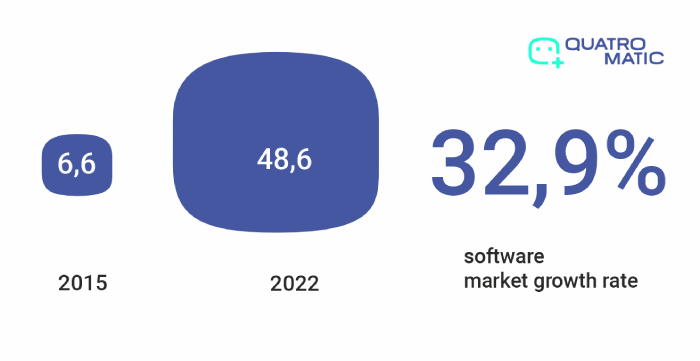
The main characteristic of Industry 4.0 is the merging of business and manufacturing with digital technologies that is called “smart manufacturing”.
From basic things (like the Internet of things, sensors and data collection) and more specialized ones (like optimization of all production processes such as logistics, procurement and manufacturing itself) to the maximum automation, and to partial or complete elimination of human labor previously used in manufacturing and business processes — these are the most common needs that businesses express when they come to us with their requests.
There are requests for machine vision systems using high-precision cameras and special software tailored to a certain industry and aimed at solving specific problems.
Machine vision has significantly expanded the possibilities of quality control and evaluation in manufacturing and has taken it to a new, higher level.
In this article, we will explain what machine vision is and how it differs from computer and technical vision. What the areas of its application are, how it can be used in the production .
Machine vision, technical vision and computer vision - an overview of tools and technologies.
Machine vision and technical vision are terms that refer to the use of computer vision in manufacturing. It is a combination of technologies such as software and hardware, system integration, expertise in computer vision and artificial intelligence. Simply put, machine vision is the application of computer vision to industrial production i.e. hardware, software and an expert who will install, configure and integrate the machine into the production process.
Computer vision is the process of automatic photographing and image processing of moving or stationary objects with the use of cameras. Computer vision is a technology for teaching artificial intelligence what we see in the world around us. Computers can see everything that humans see, only in a different way. First they need to be taught what to look at.
People working on conveyor lines inspect the goods and draw conclusions quality of the goods. However, they have a biased approach and can rely on conjectures and assumptions - it seems to one operator that there are no defects and another operator thinks just the opposite. Technical vision systems use digital smart cameras, as well as image processing software to perform similar inspections.
Computer vision "sees" by examining an image. The cameras have a high shooting speed and transmit data for further analysis to a specially developed program in an uncompressed format. While processing the images, artificial intelligence draws conclusions using a pre-compiled knowledge base and a set of functions that have been programmed to it.
Thus, machine (technical) vision is, in fact, the use of computer vision systems (digital smart cameras, image processing software and computer networks that enable computers to “see”) for manufacturing control.
Technical vision systems are programmed to perform highly specialized tasks – such as quality control – and are able to count objects, take measurements, check color, completeness, markings and barcodes, identify defects and, if necessary, compare the product with a standard. The benefits of a visual detection system using machine vision are its high speed of operation, the possibility of continuous operation 24/7 and the measurement accuracy up to 95%.
Advances in technology, increased performance, reliability and accuracy of machine vision systems contribute to the rapid and widespread modernization of quality control assessment systems in manufacturing.





